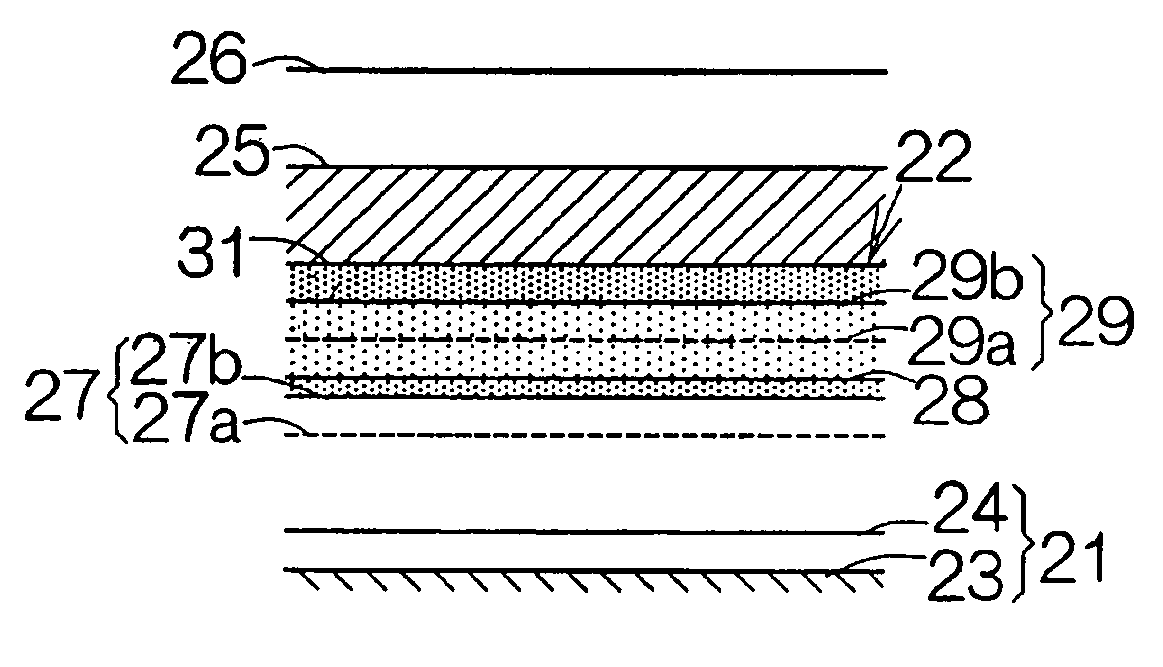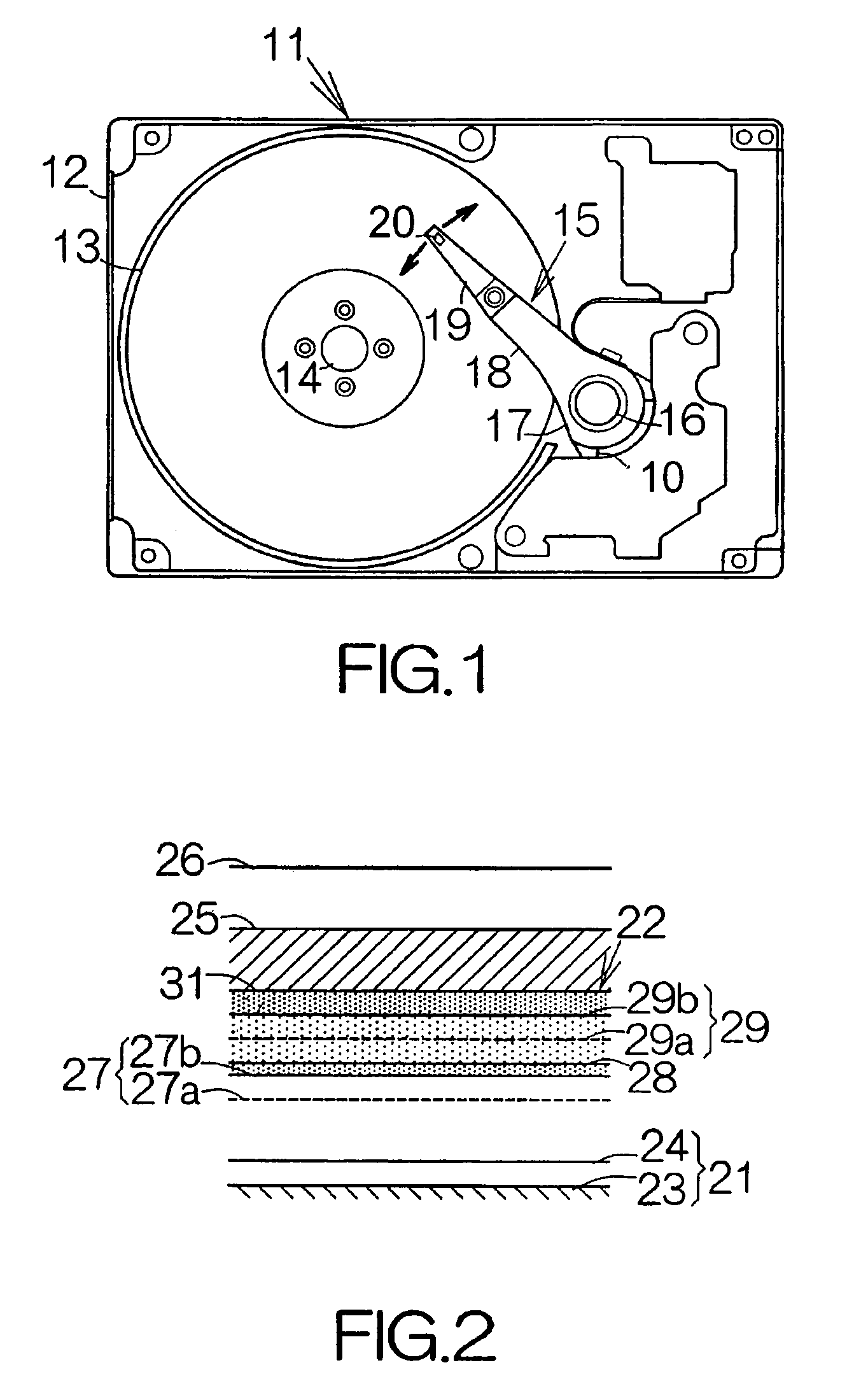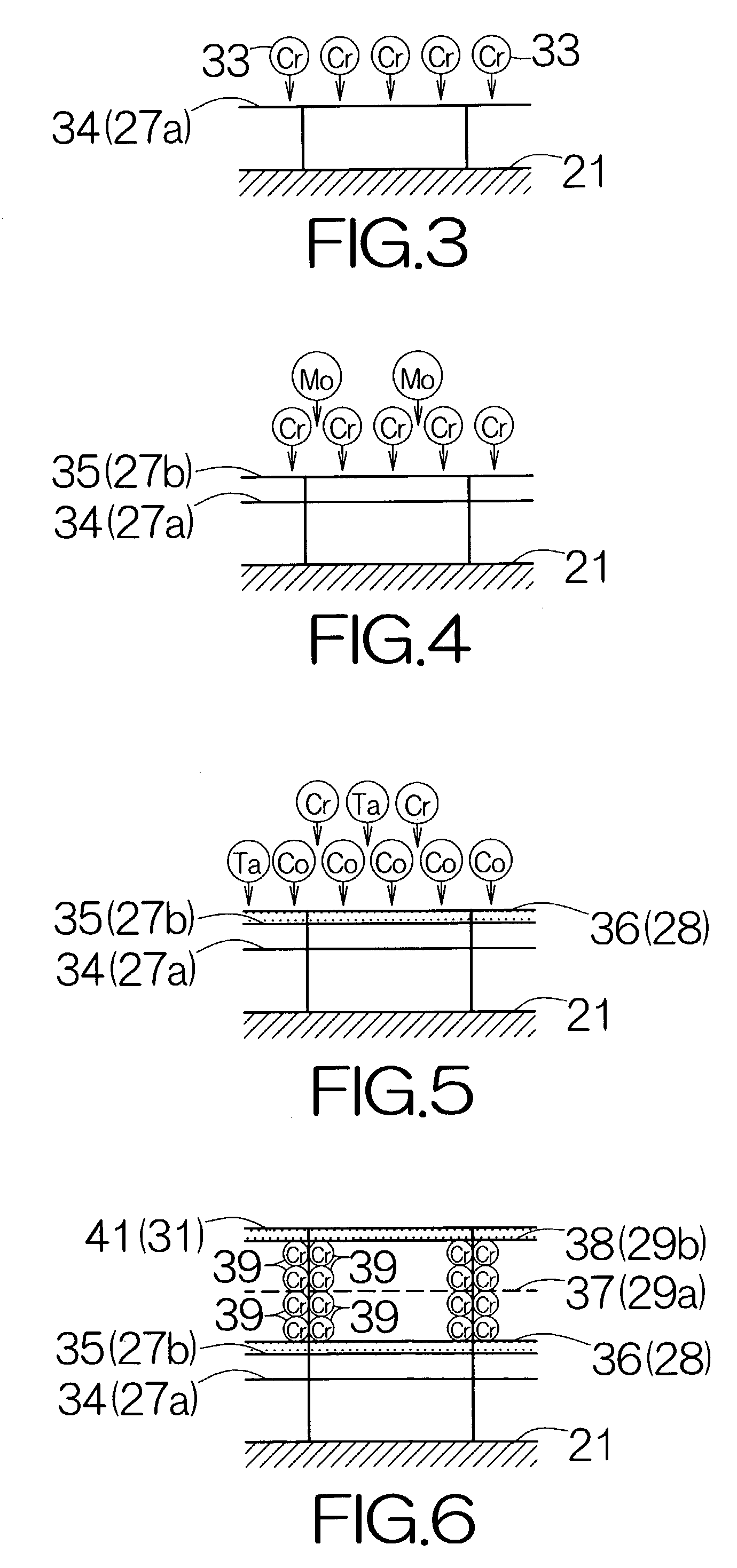Recording medium having magnetic layer of smaller thickness
a magnetic layer and recording medium technology, applied in the field of magnetic recording mediums, can solve the problems of difficult to obtain a sufficient magnitude of magnetic output, prone to breakage of magnetic bit data on the magnetic layer, etc., and achieve the effect of reducing coercivity and small thickness
- Summary
- Abstract
- Description
- Claims
- Application Information
AI Technical Summary
Benefits of technology
Problems solved by technology
Method used
Image
Examples
Embodiment Construction
[0026]FIG. 1 schematically illustrates the inner structure of a hard disk drive (HDD) 11 as an example of a recording medium drive or storage device. The HDD 11 includes a box-shaped primary enclosure 12 defining an inner space of a flat parallelepiped, for example. At least one magnetic recording disk 13 is incorporated in the inner space within the primary enclosure 12. The magnetic recording disk 13 is mounted on the driving shaft of a spindle motor 14. The spindle motor 14 is allowed to drive the magnetic recording disk 13 for rotation at a higher revolution speed such as 7,200 rpm or 10,000 rpm, for example. A cover, not shown, is coupled to the primary enclosure 12 so as to define the closed inner space between the primary enclosure 12 and itself.
[0027]A head actuator 15 is also incorporated within the inner space of the primary enclosure 12. The head actuator 15 includes an actuator block 17 supported on a vertical support shaft 16 for rotation. Rigid actuator arms 18 are def...
PUM
| Property | Measurement | Unit |
|---|---|---|
| saturation magnetic flux density | aaaaa | aaaaa |
| thickness | aaaaa | aaaaa |
| thickness | aaaaa | aaaaa |
Abstract
Description
Claims
Application Information
 Login to View More
Login to View More - R&D
- Intellectual Property
- Life Sciences
- Materials
- Tech Scout
- Unparalleled Data Quality
- Higher Quality Content
- 60% Fewer Hallucinations
Browse by: Latest US Patents, China's latest patents, Technical Efficacy Thesaurus, Application Domain, Technology Topic, Popular Technical Reports.
© 2025 PatSnap. All rights reserved.Legal|Privacy policy|Modern Slavery Act Transparency Statement|Sitemap|About US| Contact US: help@patsnap.com



